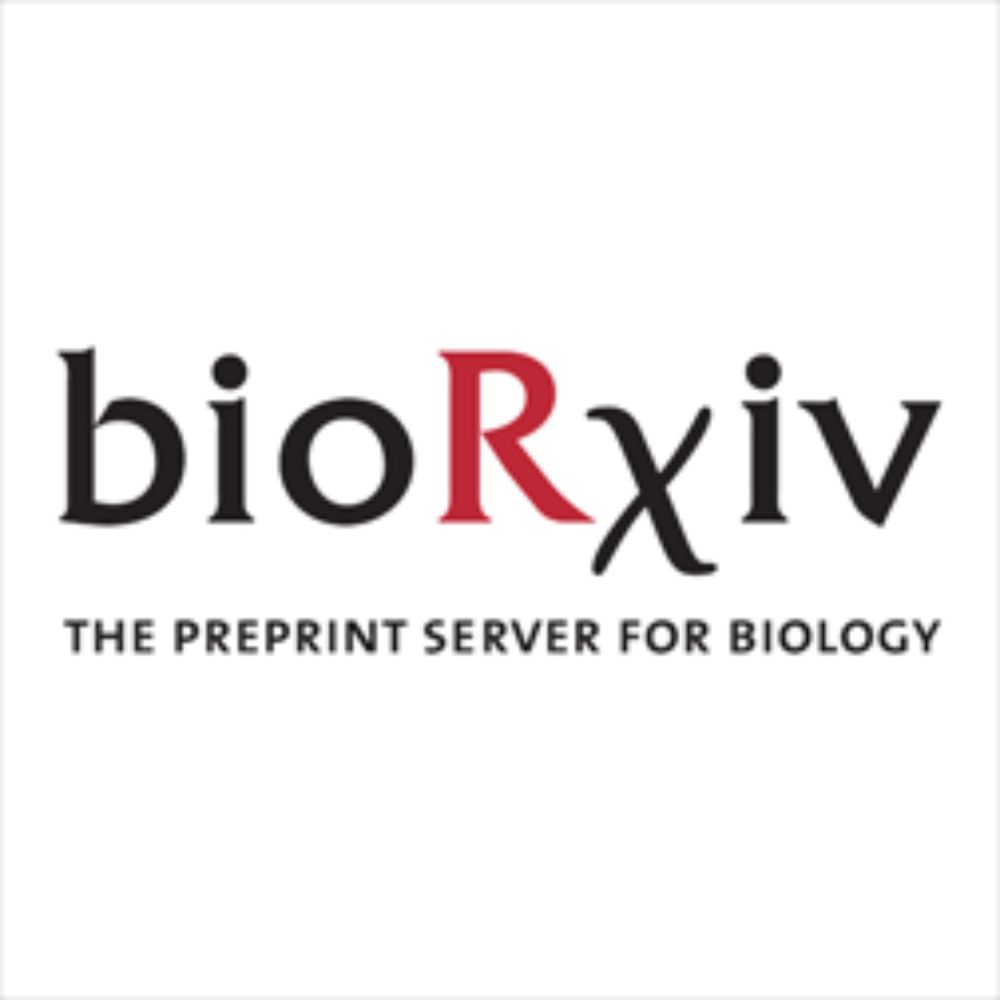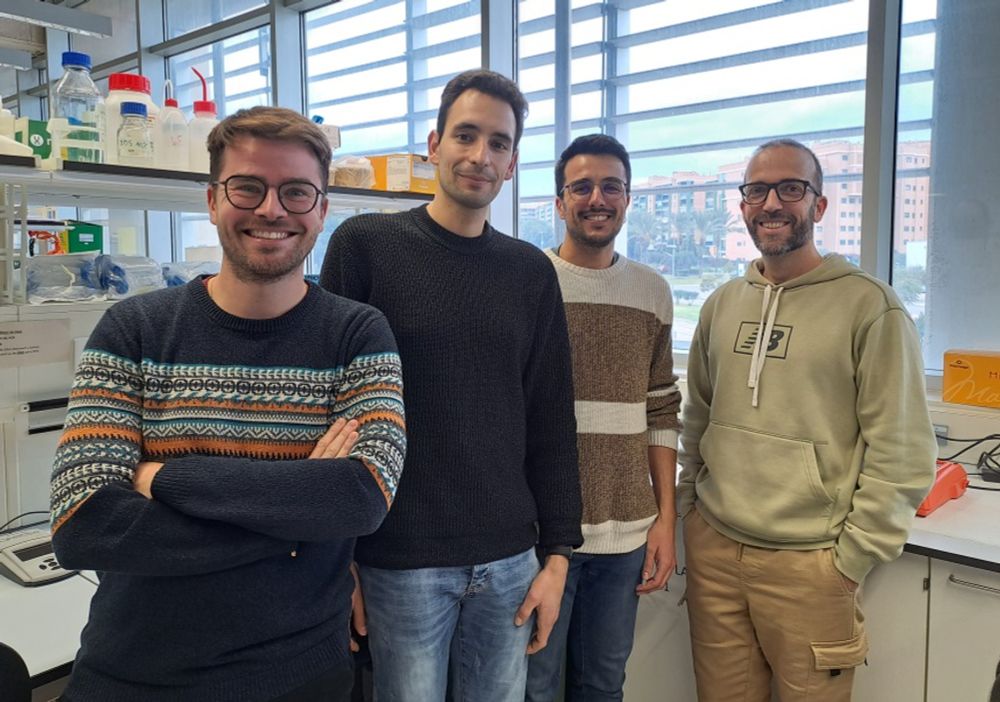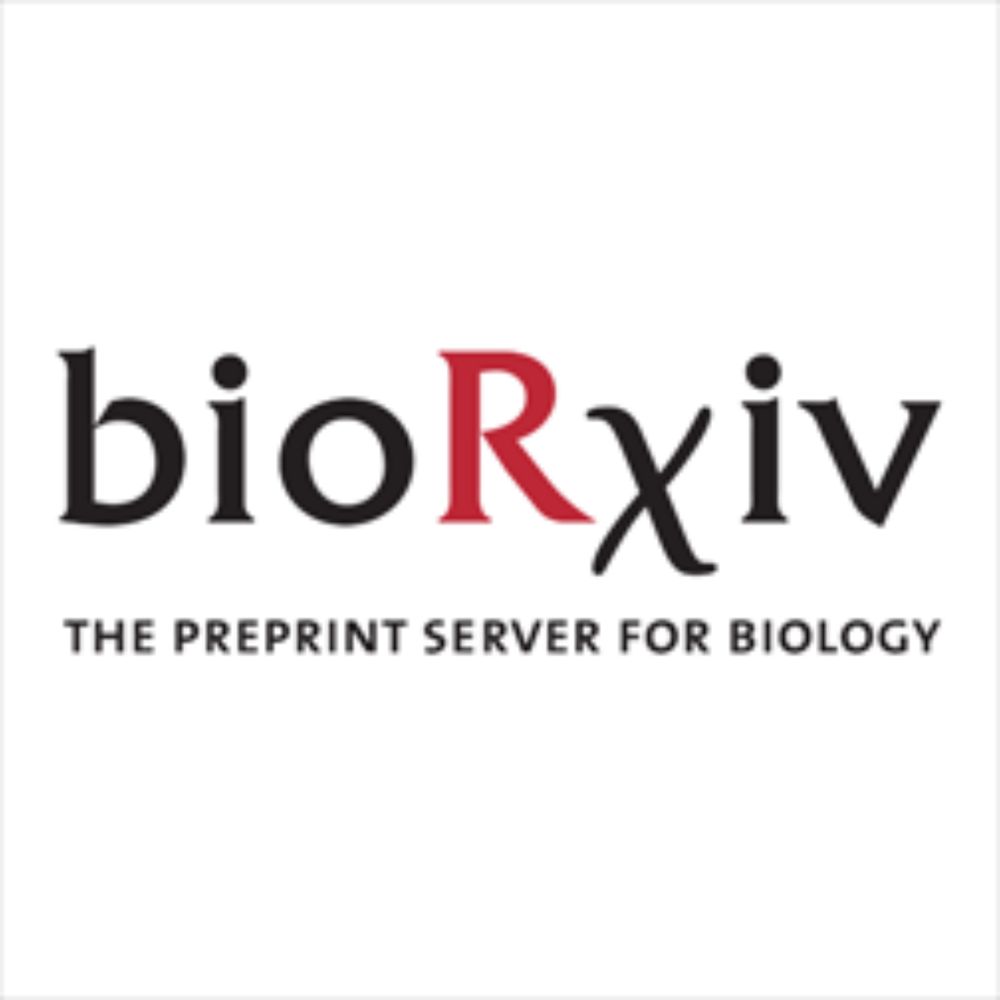
Imagen de microscopio de células fusionadas tras expresar la proteína spike del coronavirus porcino PHEV y de su receptor (DPEP1)./ Créditos: Jérémy Dufloo y Rafael Sanjuán.
🦠🐷 El @i2sysbio.es revela el mecanismo de infección de un coronavirus de cerdos emparentado con los que causan resfriados comunes en humanos
Avance para entender cómo evolucionan coronavirus como el de la COVID-19
@csic.es @ucciuv.bsky.social
delegacion.comunitatvalenciana.csic.es/descubren-qu...
20.11.2025 11:16 — 👍 2 🔁 2 💬 0 📌 0
Thanks Maria! 😀
14.10.2025 14:52 — 👍 0 🔁 0 💬 0 📌 0
Congratulations François !! 👏
04.09.2025 13:59 — 👍 1 🔁 0 💬 0 📌 0
Thanks Maria! 😊🙏🏻
23.08.2025 18:40 — 👍 0 🔁 0 💬 0 📌 0
Thrilled to have been awarded a Ramon y Cajal 5-year tenure-track contract to continue working on viral entry (and more!) with @rafa-sanjuan.bsky.social at @i2sysbio.es and @uv.es 😀🎉
19.06.2025 10:28 — 👍 7 🔁 0 💬 0 📌 1
Thanks a lot Spyros! Glad you liked them! 🙏🏻☺️
11.01.2025 08:41 — 👍 0 🔁 0 💬 0 📌 0
I'd like to warmly thank all the collaborators involved, especially in the Sanjuán and Rey labs, in particular Ignacio Fernández (not on Bluesky), co-first author of the study! Hope you'll enjoy the read! 📚
10.01.2025 17:32 — 👍 3 🔁 0 💬 0 📌 0
Altogether, this highlights the diversity in protein and glycan receptor usage among embecoviruses, and suggests that the embecovirus RBD is a highly versatile structure that can accommodate highly divergent sequences to achieve novel receptor specificities.
10.01.2025 17:32 — 👍 3 🔁 0 💬 1 📌 0
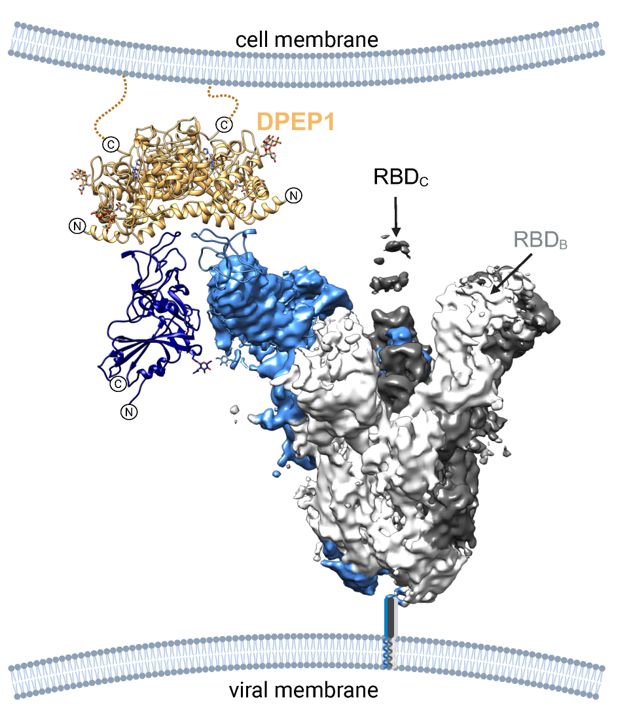
Finally, Ignacio used cryoEM to obtain the structure of the PHEV spike ectodomain. This revealed that in contrast to all other embecovirus spikes structurally resolved (OC43, HKU1, MHV), the PHEV spike spontaneously adopts open conformations, allowing interaction with DPEP1.
10.01.2025 17:32 — 👍 8 🔁 4 💬 1 📌 0
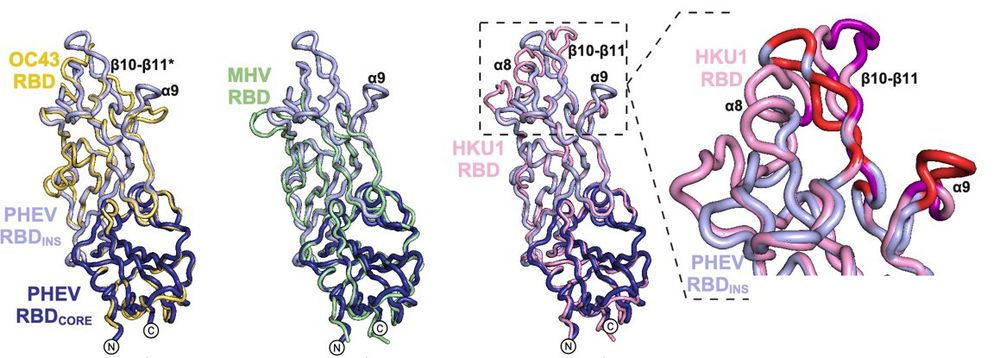
This allowed us to identify critical residues at the interface. Morevover, this revealed that despite variations in RBD sequences and receptor usage , the structural elements involved in receptor recognition are conserved across embecoviruses.
10.01.2025 17:32 — 👍 2 🔁 0 💬 1 📌 0
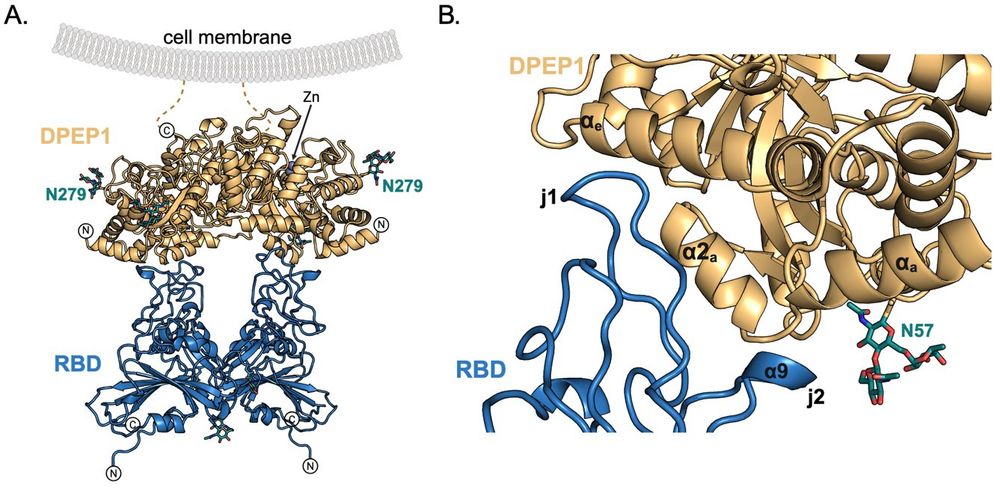
Ignacio Fernández, from Félix Rey's lab, beautifully obtained the X-ray structure of DPEP1 in complex with the PHEV RBD.
10.01.2025 17:32 — 👍 2 🔁 0 💬 1 📌 0
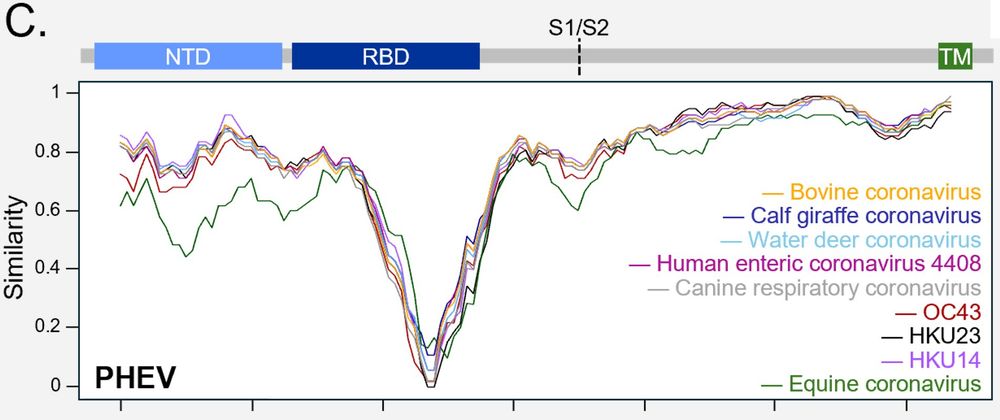
DPEP1 was a PHEV-specific receptor and could not bind other betacoronavirus 1 spikes. This could be explained by large sequence variations between the RBD of PHEV and that of other members of the species, including BCoV or OC43.
10.01.2025 17:32 — 👍 2 🔁 1 💬 1 📌 0
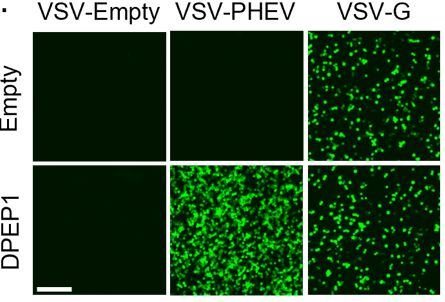
Here, we show that contrary to other embecoviruses, the entry of PHEV does not require binding to sialic acid. In contrast, we identify dipeptidase 1 (DPEP1) as a functional PHEV receptor triggering PHEV spike-mediated fusion (entry and cell-cell fusion).
10.01.2025 17:32 — 👍 2 🔁 1 💬 1 📌 0
Therefore, sialic acid had long been considered as the only embecovirus receptor. However, the recent discovery that TMPRSS2 acts as the protein receptor of HKU1 revealed a more complex scenario. Whether other embecovirus dually depends on a protein and sialic acid is unknown.
10.01.2025 17:32 — 👍 2 🔁 0 💬 1 📌 0
The N-terminal domain (NTD) of the embecovirus spike harbors a conserved glycan-binding site that interacts with sialic acid in HKU1, OC43, BCoV, and PHEV and this interaction is necessary for HKU1, OC43 and BCoV entry.
10.01.2025 17:32 — 👍 2 🔁 0 💬 1 📌 0
The betacoronavirus 1 species is the main taxon of the Embecovirus subgenus (Betacoronavirus genus), which includes other relevant viruses such as the human common cold virus HKU1 🤒 and murine hepatitis virus (MHV) 🐁.
10.01.2025 17:32 — 👍 2 🔁 0 💬 1 📌 0
In this work, we focused on the betacoronavirus 1 species. It includes ten host-specific viruses such as the porcine hemagglutinating encephalomyelitis virus (PHEV) 🐖 and bovine coronavirus (BCoV) 🐄, but also the human seasonal cold virus OC43 🤒.
10.01.2025 17:32 — 👍 2 🔁 0 💬 1 📌 0
Thanks! 🙏🏻
06.01.2025 12:35 — 👍 0 🔁 0 💬 0 📌 0
I'd like to warmly thank everyone in Rafael Sanjuán's lab involved in this project! 🙏😃 I hope you'll enjoy the read, and don't hesitate to reach out if you're interested in any of the pseudotypes we generated! 😉
02.01.2025 12:13 — 👍 1 🔁 0 💬 0 📌 0
Altogether, our results suggest that post-entry stages of the infection cycle, as well as epidemiological and ecological factors, may be more critical determinants of viral zoonosis than entry.
02.01.2025 12:13 — 👍 0 🔁 0 💬 1 📌 0
We also tested the role of non-protein factors (i.e. sialic acids and heparan sulfates) in the entry of around 80 human-infective pseudotypes.
02.01.2025 12:13 — 👍 0 🔁 0 💬 1 📌 0
In contrast, we showed that some host factors acted as broad-range determinants of viral entry. For example, the basal levels of IFITMs correlated negatively with the infectivity of most viral pseudotypes.
02.01.2025 12:13 — 👍 0 🔁 0 💬 1 📌 0
We first focused on known viral receptors and showed that the infectivity of some, but not all, pseudotypes correlated with receptor expression. For many viruses, the availability of specific cell-surface receptors is therefore not the main factor limiting viral entry.
02.01.2025 12:13 — 👍 0 🔁 0 💬 1 📌 0
Virology Ph.D. Candidate in Iwasaki and Wilen Labs at
Yale, studying zoonotic coronaviruses. #LoveVirology. Isaiah 40:31 🦅.
https://scholar.google.com/citations?user=lDljP4kAAAAJ&hl=es
PhD Student | Yeast Biotechnology
Prof at Cornell, #firstgen, immigrant 🇫🇷🇺🇸. Transposons, viruses, and all the cool stuff genomes are made of. https://www.feschottelab.com
EMBO Postdoc in Leanne Li lab at the Francis Crick Institute | Previously PhD student in Luca Tiberi lab at CIBIO_UniTrento | Interested in how neurons interact with tumours | 🇮🇹🏳️🌈
Our lab investigates humoral immune responses to human pathogens with a focus on HIV-1, Hepatitis viruses & emerging infections, and a dual interest in basic and translational research.
La SFV c'est plus de 1000 virologistes mobilisés, de la recherche fondamentale à la virologie appliquée et clinique.
Virologist at University Medical Center Freiburg| Understanding (zoonotic) influenza A viruses and innate immunity | Bats and bat flu
🛰️ Biologist 🧬and Chemist 🧪Now PhD candidate at #EnBiVirLab Interested in phages and their use in therapy Also part of @vlcphagehunters
Biochemist interested in membranes and proteins, specially when they mix. https://research.uv.es/membrana/
Dean @ccbiologiquesUV.bsky.social @uv.es 🇪🇺
PI Environmental and Biomedical Virology Lab #EnBiVirLab
Universitat de Valencia-CSIC
@VLCphagehunters
Co-founder and CSO at Evolving Therapeutics
@evolving_spain
Spain
Virology. Evolution. Science at large. Now focused on emergent viruses. Universitat de Valencia.
Postdoc fellow investigating the mechanisms of viral neuropathogenesis @StanfordMed and @CZBiohub | PhD in Poxvirus ☣️ @CSIC
#viromics #poxrocks #flavis
Post-doc in Caroline Goujon's lab at IRIM, Montpellier - working on 3D airway epithelia, genome editing and respiratory viruses
Professor of Microbiology and Immunology at the University of Minnesota. Interested in virus-host interactions, antiviral immunity, and virus evolution.
Editor in Chief of the #NonProfit, #OpenAccess journal @plosbiology.org Former Chief Editor of Nature Microbiology.
#Virologist. #Feminist. #Spaniard in the UK. #Galician. #European always.
Views my own.
https://orcid.org/0000-0002-3666-5683




